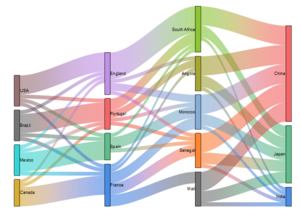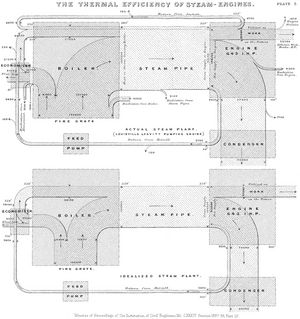Sankey Diagram
| Line 11: | Line 11: | ||
| − | Correct application and automation of the Sankey diagram can provide fast and easy access to complicated data. The purpose of the article is to dive further into the possible applications of the Sankey diagram, as well as the benefits and limitations it can bring to upper management when making decisions in terms of resources and strategy. | + | Correct application and automation of the Sankey diagram can provide fast and easy access to complicated data. The purpose of the article is to dive further into the possible applications and key characteristics of the Sankey diagram, as well as the benefits and limitations it can bring to upper management when making decisions in terms of resources and strategy. |
= References = | = References = | ||
<references/> | <references/> | ||
Revision as of 21:24, 12 February 2022
By Sonia Guerra Loji (s203379)
The article's aim is to highlight the usefulness of the Sankey diagram in a project & portfolio management context. The article includes a discussion of the diagram's pros and cons from the Managements perspective.

Abstract
Within project & portfolio management it has become even more important that leadership is able to visualize where resources are being allocated and used. This is in terms of simple supervision over the projects, but also to optimize the limited resources an organization has. The Sankey diagrams are a graphical way of visualizing the flow of resources in a team, project, process, company, etc. Resources mapped in a Sankey diagram can be anything from materials, monetary funds, people allocation, activities, etc.

Correct application and automation of the Sankey diagram can provide fast and easy access to complicated data. The purpose of the article is to dive further into the possible applications and key characteristics of the Sankey diagram, as well as the benefits and limitations it can bring to upper management when making decisions in terms of resources and strategy.